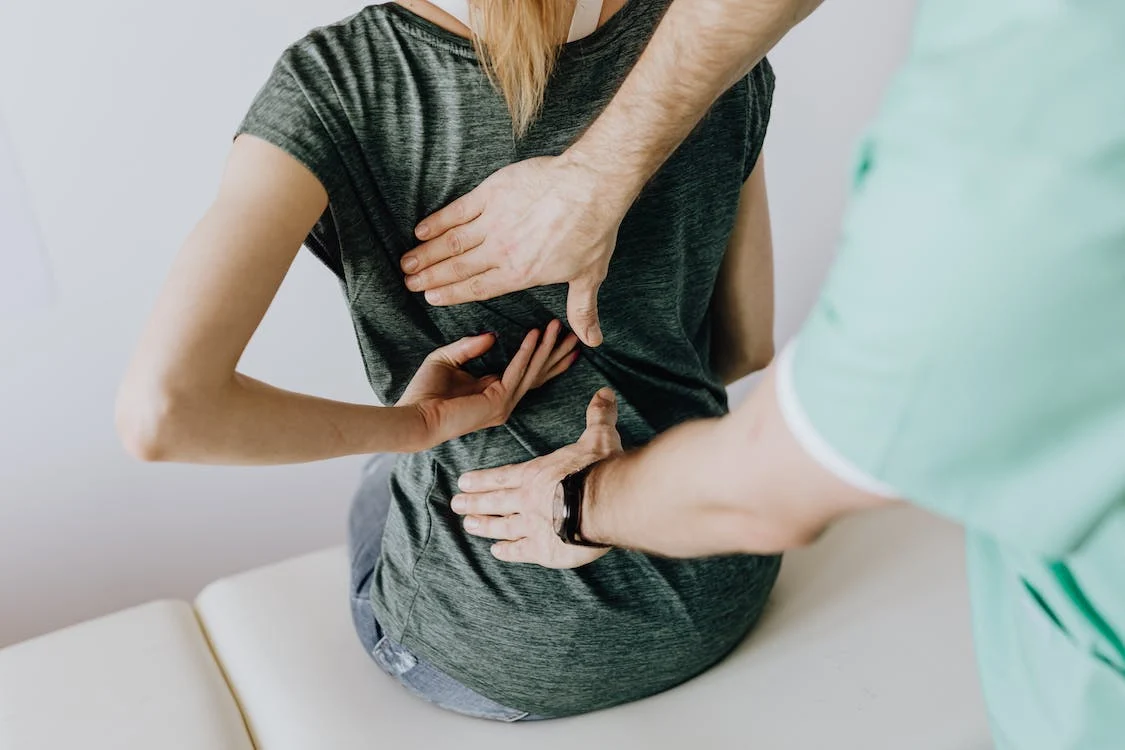The Real Culprit Behind Your Back Pain
October 17, 2023
Introduction
Low back pain is a common problem that many people experience at some point in their lives. When it strikes, it’s easy to assume that the pain originates in the lower back itself. However, the truth is a bit more complicated. Sometimes, the root causes of low back pain can be traced to areas both above (the thoracic spine) and below (the hips, foot, and ankle). In this article, we’ll explore why low back pain may not always be the fault of the lower back and what you can do to prevent and alleviate it.
The Link between the Thoracic Spine and Low Back
- Posture and Mobility Matters: Your posture plays a significant role in low back health. When you slouch or hunch forward, it can put extra stress on your lower back and it stiffens up the thoracic spine. The thoracic spine, which is the upper part of your spine, drives the movement and direction of the rest of the spine. When it is stiff, tight, and in poor postures, this leads to more stress and strain being placed on the low back joints and muscles.
- Weak Core Muscles: The muscles in your core, which include the abdomen, lower back, pelvic floor and hip muscles, help stabilize your spine. If you have poor muscle engagement in this area it can cause more compressive forces on the spine joints instead of supporting them.
The Connection between Hips, Foot, and Ankle
- Hip Mobility: Hips are two of our largest joints in the body. If they are limited in motion, your body will “steal” the motion from the low back, thus putting more stress on that area.
- Foot and Ankle Mobility and Posture: Believe it or not, the way your feet and ankles function can impact your lower back. If your feet have poor posture and mobility, they are the first things to hit the ground with every step you take.
Preventing Low Back Pain
- Mobility in hips and upper back: Make sure you have regular exercises that move your hips and your upper back.
- Good Posture with regular movement: Pay attention to your posture. Stand and sit up straight. Don’t stay in one position/posture for extended periods of time. Mix it up and change sit vs. stand vs. walk.
- Stability Exercise: Engage in regular physical activity to strengthen the muscles that support your spine. While traditional exercises such as planks, bridges, bird dogs isolate core muscles, eventually make sure you are incorporating deadlifts, squats, lunges, etc that mimic your daily life and routine.
- Footwear: Ensure that your shoes provide proper support and cushioning. This can help maintain good posture in your feet and ankles, which, in turn, may alleviate low back pain. Consider a supportive house slipper if you get low back pain with standing on your feet while cooking, doing dishes, etc. and otherwise are without a shoe in the house.
Conclusion
Low back pain can be a complex issue with causes that extend beyond the lower back itself. The thoracic spine, hips, and the posture of your feet and ankles all play important roles in maintaining a healthy lower back. By focusing on proper mobility, good and dynamic posture, regular exercise, and proper footwear, you can help prevent and alleviate low back pain. Remember, taking care of your entire body, not just your lower back, is the key to a pain-free and active life.
